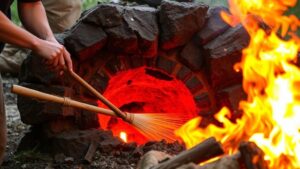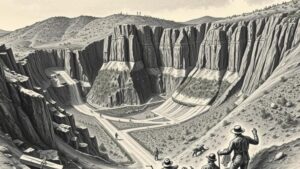How to Identify and Collect Gold Flakes in High-Sediment Areas
How to Identify and Collect Gold Flakes in High-Sediment Areas
Gold prospecting in high-sediment areas presents unique challenges and opportunities. Understanding how to effectively identify and collect gold flakes requires knowledge of sediment dynamics, gold’s properties, and effective gold recovery techniques. This article will equip readers with practical strategies for locating and extracting gold in such environments.
Understanding Gold in Sediment
Gold is often found in alluvial deposits, where it has been transported by flowing water and deposited in streams and rivers. High-sediment areas tend to be dynamic, with fast-moving water carrying substantial amounts of material. Golds heavy density allows it to settle in specific locations amidst the lighter sediments.
- Gold has a specific gravity of approximately 19.3, making it denser than most sediment materials.
- As water flows, gold flakes often accumulate in crevices, behind boulders, and in the tails of river bends.
Identifying Potential Gold Locations
In high-sediment areas, identifying the right spots to search for gold is critical. Factors to consider include the type of sediment, the water flow patterns, and geological formations.
- Look for Eddies: These are slow-moving water areas where heavy materials, including gold, tend to settle.
- Evaluate Streambed Composition: Observe varying sediment layers, as gold is typically found beneath coarser materials.
- Check for Indicator Minerals: The presence of minerals like magnetite can signal potential gold deposits nearby.
Collecting Gold Flakes: Tools and Techniques
Effective collecting requires the right tools and methods. Here are essential tools and techniques for collecting gold flakes in high-sediment areas:
- Pans: Use a wide-brimmed pan to wash away lighter sediments while retaining gold. Choose a pan with riffles to improve retention.
- Sluice Boxes: These devices can process larger amounts of material, capturing gold as sediment flows through them.
- Shovels and Trowels: For digging sediment and aggregate materials directly from the riverbed, ensuring you reach the gold-rich layers.
Techniques for Optimizing Gold Recovery
Applying proper techniques is crucial for maximizing gold recovery in high-sediment areas:
- Layer Technique: Work through different sediment layers systematically, always starting with the coarsest materials to expose potential gold beneath.
- Wet Panning Technique: This method involves adding water to your pan while separating sediment; the water reduces friction and allows finer material, including gold, to settle.
- Adjusting Flow Rates: For sluice boxes, adjusting the water flow can help effectively separate finer particles from gold.
Safety Considerations
Safety should always be a priority while prospecting in high-sediment areas. Here are key safety tips:
- Wear Proper Gear: Footwear, gloves, and protective eyewear are essential to prevent injuries from sharp rocks and heavy tools.
- Be Aware of Water Conditions: Fast-flowing waters can be hazardous. Always assess conditions and have a safety plan in place.
- Work with a Partner: It’s advisable to prospect with someone else to ensure safety in remote locations.
Real-World Applications and Case Studies
Many successful gold prospectors have utilized these strategies in high-sediment areas. For example, amateur prospector Jane Doe conducted extensive research on sediment flows in Californias riverbeds. After implementing targeted collecting techniques, she reported finding numerous flakes in areas previously overlooked by conventional methods.
Plus, a study conducted by the U.S. Geological Survey indicated that localized sediment sampling in identified eddies and crevices increased gold recovery rates by over 25%. This statistic confirms the efficacy of applying systematic techniques in sediment-rich environments.
Conclusion and Actionable Takeaways
Identifying and collecting gold flakes in high-sediment areas requires a blend of understanding sediment behavior, utilizing appropriate tools, and applying effective techniques. Remember to:
- Identify ideal locations by evaluating sediment and water flow patterns.
- Use the right tools such as pans and sluice boxes while applying correct techniques for effective recovery.
- Prioritize safety while engaging in gold prospecting activities.
By incorporating these strategies, you will enhance your chances of successful gold recovery in even the most challenging sediment-laden environments.



